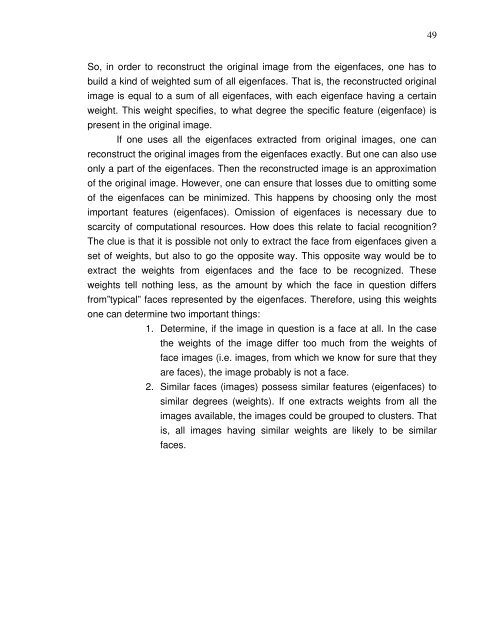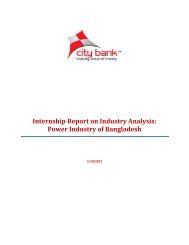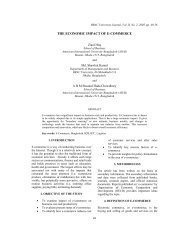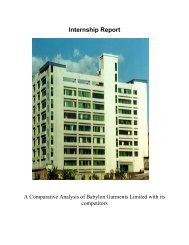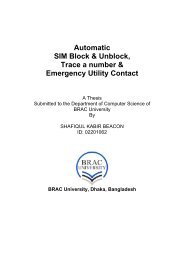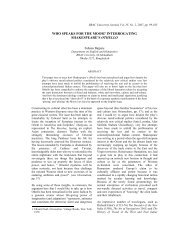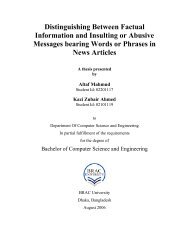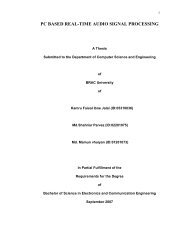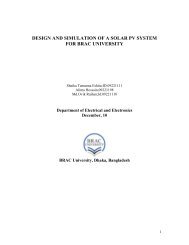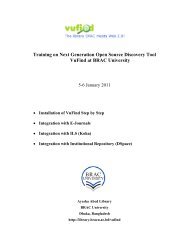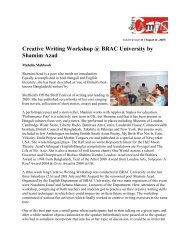LITERATURE SURVEY OF AUTOMATIC FACE RECOGNITION ...
LITERATURE SURVEY OF AUTOMATIC FACE RECOGNITION ...
LITERATURE SURVEY OF AUTOMATIC FACE RECOGNITION ...
Create successful ePaper yourself
Turn your PDF publications into a flip-book with our unique Google optimized e-Paper software.
So, in order to reconstruct the original image from the eigenfaces, one has to<br />
build a kind of weighted sum of all eigenfaces. That is, the reconstructed original<br />
image is equal to a sum of all eigenfaces, with each eigenface having a certain<br />
weight. This weight specifies, to what degree the specific feature (eigenface) is<br />
present in the original image.<br />
If one uses all the eigenfaces extracted from original images, one can<br />
reconstruct the original images from the eigenfaces exactly. But one can also use<br />
only a part of the eigenfaces. Then the reconstructed image is an approximation<br />
of the original image. However, one can ensure that losses due to omitting some<br />
of the eigenfaces can be minimized. This happens by choosing only the most<br />
important features (eigenfaces). Omission of eigenfaces is necessary due to<br />
scarcity of computational resources. How does this relate to facial recognition?<br />
The clue is that it is possible not only to extract the face from eigenfaces given a<br />
set of weights, but also to go the opposite way. This opposite way would be to<br />
extract the weights from eigenfaces and the face to be recognized. These<br />
weights tell nothing less, as the amount by which the face in question differs<br />
from”typical” faces represented by the eigenfaces. Therefore, using this weights<br />
one can determine two important things:<br />
1. Determine, if the image in question is a face at all. In the case<br />
the weights of the image differ too much from the weights of<br />
face images (i.e. images, from which we know for sure that they<br />
are faces), the image probably is not a face.<br />
2. Similar faces (images) possess similar features (eigenfaces) to<br />
similar degrees (weights). If one extracts weights from all the<br />
images available, the images could be grouped to clusters. That<br />
is, all images having similar weights are likely to be similar<br />
faces.<br />
49


